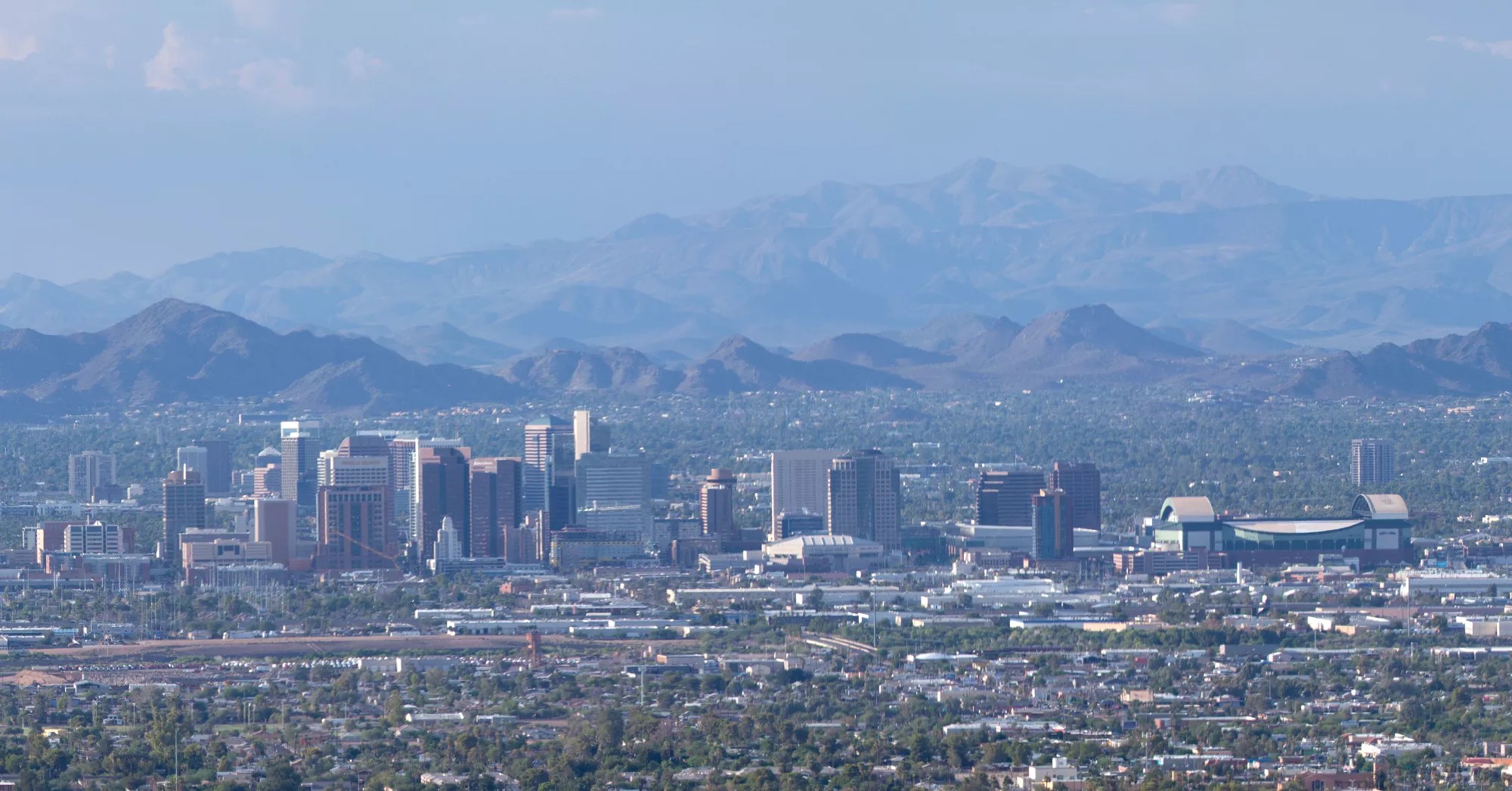
Alan Stark/Flickr/CC BY-SA 2.0

Audio By Carbonatix
It’s official: the Valley of the Sun is sinking, according to a research study.
But don’t go panicking yet – almost all major cities in the United States are sagging, and Phoenix isn’t among the fastest-sinking.
The city is sinking by an average of less than a millimeter every year (0.85 millimeters, to be more precise). It’s worse in some areas than in others. A map included in the study, which was published by Nature Cities, shows that while most of Phoenix isn’t sinking, the west side is dropping by about 3 millimeters every year. The Pinnacle Peak area that borders Scottsdale is sinking by at least 5 millimeters per year.
Out of the 28 largest cities in the country, Phoenix is in the middle of the pack – it has the 18th-highest rate of subsidence, which is a fancy word for sinking. The cities that are sinking the fastest are in Texas – Houston (more than 5 millimeters a year) and Dallas and Fort Worth (both around 4 millimeters). New York (2.4) and Chicago (2.3) also have high subsidence rates.
The study’s researchers estimated that “at least 20% of the urban area is sinking in all cities, mainly due to groundwater extraction,” affecting about 34 million people. They used space geodetic measurements from 2015-21 to calculate the annual sinking rates.
Groundwater extraction played a huge role in causing Phoenix to sink during its urban boom in the late 20th century. Over a 40-year period starting in the 1950s, Phoenix sank a whopping 18 feet – almost half a foot every year.
Today’s millimeter-a-year sinkage isn’t so bad, comparatively. That’s because in 1980, Arizona passed the Groundwater Management Act, implementing reforms for water conservation, minimizing how much water Valley cities pump from the ground and restocking underground reservoirs.
Still, Phoenix should be wary of its sinking status – a little can have a big effect, the study noted.
“Even modest rates of urban subsidence can profoundly impact the structural integrity of buildings, roads, bridges and dams,” researchers wrote. “Over time, these incremental changes may accumulate, magnifying vulnerabilities within urban systems, notably exacerbating existing flood risks with impacts on urban livability.”
Compared to other cities, Phoenix’s infrastructure isn’t terribly threatened: Only 172 buildings are at risk and none are at high risk of crumbling, according to the study. Compared to the more than 10,000 buildings at risk or high risk in Dallas and almost 4,000 in Houston, that isn’t so bad.
Still, the researchers don’t think things are likely to improve any time soon.
“The anthropogenic drivers of subsidence, including groundwater extraction and the loading effect of urban development, are likely to intensify as cities continue to grow and climate change exacerbates environmental stresses,” the study noted.
So next time you get that sinking feeling, take heart: It’s just the city crumbling under your feet. Very, very slowly.